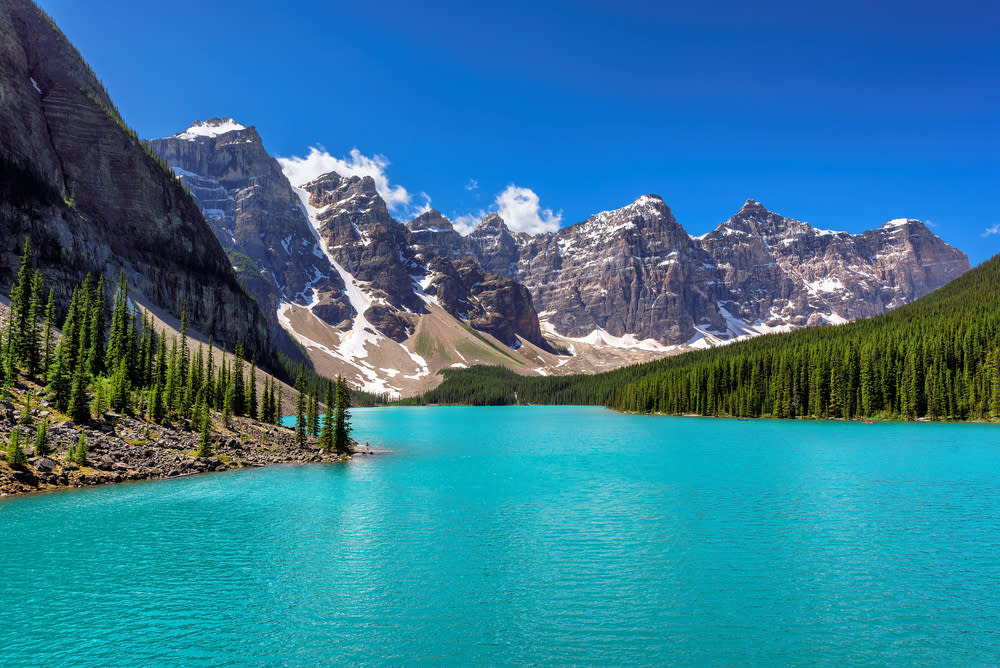More from Banff
Main Menu
- 00:00
- 06:00
- 12:00
- 18:00
- 23:00
Banff : Next 24-Hour Weather
Today - 22nd April 2025
Sunrise 06:33
Sunset 20:53
Tomorrow - 23rd April 2025
Sunrise 06:33
Sunset 20:53
Holiday Weather Now
Sorted by popularity:
Updated at 12:00 GMT
-
Temp feels like2°C36°F
-
Length of day14h 16m
-
Pressure30" (1022 hpa)
-
Visibility2 km (1miles)
-
Wind speed5 km/h
Sunrise 06:35
Sunset 20:51
-
Temp feels like:
2ºC (36 ºF)
-
Length of day:
14h 16m
-
Pressure:
30" (1022 hpa)
-
Visibility:
1 miles (2 km)
-
Wind speed:
5 km/h
Banff Weather , Canada
One of Canadaâs most famous mountain resorts, Banff has seen more than its fair share of tourists since its founding in 1880.
Banff is the largest town in the Banff National Park (naturally) and is surrounded by many, many mountains. Their main tourism comes from hikers and mountaineers and the town is close to three separate ski resorts, but many other holiday-makers visit Banff for the peaceful solitude that the town emanates.
Basically, if you like being high up and outside, youâll want to go to Banff. You can usually see snow-capped mountains wherever you turn and the town is host to several film festivals, bike races as well as various hot springs.
The seasons temperatures tend to be pretty fluid compared to resorts that are closer to sea-level.
Summer
The season can range through average temperatures from 5.4 °C (42°F) at its lowest to 21.9°C (71°F) at its highest throughout the whole season. Thatâs quite a range, but then given the altitude (1,463 m/4,800 ft) and the geography, itâs not difficult to see why the weather is temperamental.
Banffâs summer comes with a humidity range of 77-83% it should ensure a nice warm day out on the rock face. Banff was once subjected to a punishing temperature of 38.4°C (101.12°F)⦠thatâs outrageously hot.
That being said, the humidity always brings that chance of frost in the summer.
The weather forecast outlines rainfall to anything from 54mm to 61mm, which isnât much if you think about it, even though itâs Banffâs most rainy season. It will likely make those steeper parts of the mountains a bit more treacherous, but that wonât deter the mountaineers. They seem to like a challenge.
Snow (yes, snow) tends to be shallow in the summer around the fringes of 0 and 2cm. This IS Canada though, so it shouldnât come as that much of a surprise.
The wind speeds are the mid-range for the annual average, with the average blast being only 7-8 Kmh. Thatâs a nice breeze.
The UV index indicates a very high level of rays, so precautionary measures should still be taken, even if it snows.
Winter
Canada at its finest. The winter hits hard and fast in Banff with the maximum temperatures being at an almost freezing 0.4°C (31°F) at the last leg of the season and the snow-covered lows are anywhere from -14.1°C (7°F) to -11.6 °C (11°F). Hereâs an interesting point to note for those log fire and cognac conversations, in January 1950 the lowest temperature in Banff was -51°C (-59°F). Think brass monkeys!
The winterâs humidity is around 76-78%, ensuring it will be cold and frosty all the time.
The precipitation peaks as a mild 33.2mm with lows of 29mm. That may not sound like much, but remember, it is Canada after all, not the Sahara. You can expect the majority of skyfall to be snowy at this time of year. Itâs this time that the town becomes filled with holiday-makers toting skiâs. Winter brings anything from 29.3cm to 43.2cm. Another factoid: March 1972 saw the snow being 132cm deep!
Spring/Autumn
The two seasons act as transitional periods as spring sees the temperature rise from lows of -7.3 °C (19°F) with the potential to quickly become warm again as the season carries highs of 14.5°C (58°F). The rain follows the transitional aesthetic, growing up from winter with 23.4mm in March reaching up for summer with 59.6mm.
The snow declines, but not really that much. Winter becomes spring with a gradual fall from 29cm to 28cm and the season ends after a mild drop to 17cm.
Spring also sees the calmest winds in Banff at only 6-8 Kmh.
The holiday resortâs autumn temperature forecast unsurprisingly follows the wide range as it can be as warm as 16.3°C (61°F) and as cold as -8.4°C (17°F). The high temperatures decrease as the months progress to get ready for a good winter.
The humidity helps the temperature fall as it stays around the 75-81% area and with the snowfall growing from 5.7cm to 32.3cm, it ensures the air is going to be laced with cold. Make sure the heatingâs on and the fire is lit or you may be able to watch your breath while youâre indoors.
Unlike spring, as autumn progresses, the typical amount of rain falls from summerâs sodden 42.1mm to the snowy regions, leaving only 33.2mm left for the rain in December.

















